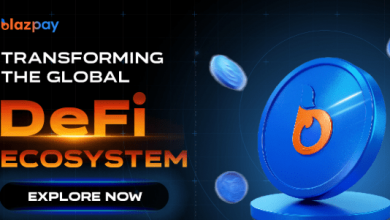Legacy Systems Are the New Bottleneck: The Tech Debt No One Wants to Talk About

The Silent Crisis of Legacy Systems
Across the insurance sector, a quiet crisis is unfolding. Outdated core systems, some of which are decades old, continue to drive everyday operations for many carriers. These legacy systems were once state-of-the-art, but today, they act like anchors, slowing digital innovation, restricting real-time data access and making it nearly impossible to keep up with shifting regulations. It’s not a flashy problem, which is exactly why it’s so dangerous.
Gartner projected that this year, legacy systems will account for 40% of companies’ IT budgets on maintenance alone.
For policyholders, this tech stagnation means clunky user experiences, delayed service and limited digital interaction. For insurers, this translates into missed opportunities, mounting technical debt and an increasingly difficult struggle to stay competitive in a tech-first world.
Why It’s Getting Harder to Ignore Old Tech
Today’s policyholders aren’t interested in fax machines, phone trees or weeklong turnaround times. They expect real-time service, intuitive digital interfaces and seamless billing. That kind of experience simply isn’t possible when your core system is stuck in the early 2000s.
What’s worse? The industry knows it.
A growing chorus of CIOs, CTOs and innovation leads is sounding the alarm. Technical debt from legacy systems isn’t just a “tech team problem” anymore; it’s a business liability. It limits product development, makes compliance a nightmare and sucks up IT budgets that could be used to actually move the company forward.
Payments: The Backdoor to Modernization?
The path to modernization often starts with something as behind-the-scenes as digital payments. Not because they’re flashy, but because they’re essential. Billing platforms are one of the few areas where legacy infrastructure and modern SaaS can actually coexist (for a while).
That’s why companies offering cloud-based payment tools are becoming unexpected catalysts for change. They sneak past the institutional resistance because they solve a real pain point. Once they’re in, insurers get a taste of what agile, flexible tech can do. And it opens the door more for insurers, better data flows, more automation and tighter integrations.
Quiet Builders Over Loud Disruptors
Some of the most effective players in this space aren’t promising to “revolutionize” insurance with blockchain or generative AI. They’re helping carriers modernize in a way that doesn’t break everything else.
Leaders like Todd Greenbaum of Input 1 have built entire careers quietly helping insurers upgrade, one system at a time. It’s essential, but often unrecognized work. Greenbaum’s approach has always been pragmatic: start with something tangible, like billing, show the ROI and use that momentum to tackle deeper transformation.
Input 1 now handles more than $16 billion in premiums annually, not by overhauling everything overnight, but by building trust and solving real problems.
The Real Barrier is Culture
The truth is, most insurance companies don’t lack awareness. They know their systems are old. What they often lack is a roadmap and the internal political will to start changing.
A recent Forrester survey of global insurance leaders found that more than half (53%) said their digital transformation efforts have not been successful in achieving their desired business outcomes
Modernization means risk. It means navigating cross-functional buy-in. It means preparing your workforce for change. But what’s becoming clear is that not changing carries far more risk in the long run.
The C-suite needs proof points to flex already tight operational budgets and investments. Billing is among the most cumbersome functions in any business and can also be the source of lost revenue. Starting at billing with point-based solutions that can be implemented quickly and show results even quicker is the piloting most businesses need to risk other technological adoptions.
Where the Industry Can Go From Here
Modern insurance infrastructure won’t be built in a single transformation sprint. It’s going to be a long marathon with breaks in between miles. More than anything, it is going to require partners who understand both the old and the new. And it will depend on leaders willing to trade “safe and familiar” for “modern and scalable.” With leaders like Todd Greenbaum and companies like Input 1, there’s a path forward, from tech debt to digital agility.
The takeaway? Legacy systems might still run the show, but they shouldn’t run your future. Whether the entry point is billing, claims or customer engagement, modernization is overdue.

Source: Legacy Systems Are the New Bottleneck: The Tech Debt No One Wants to Talk About


